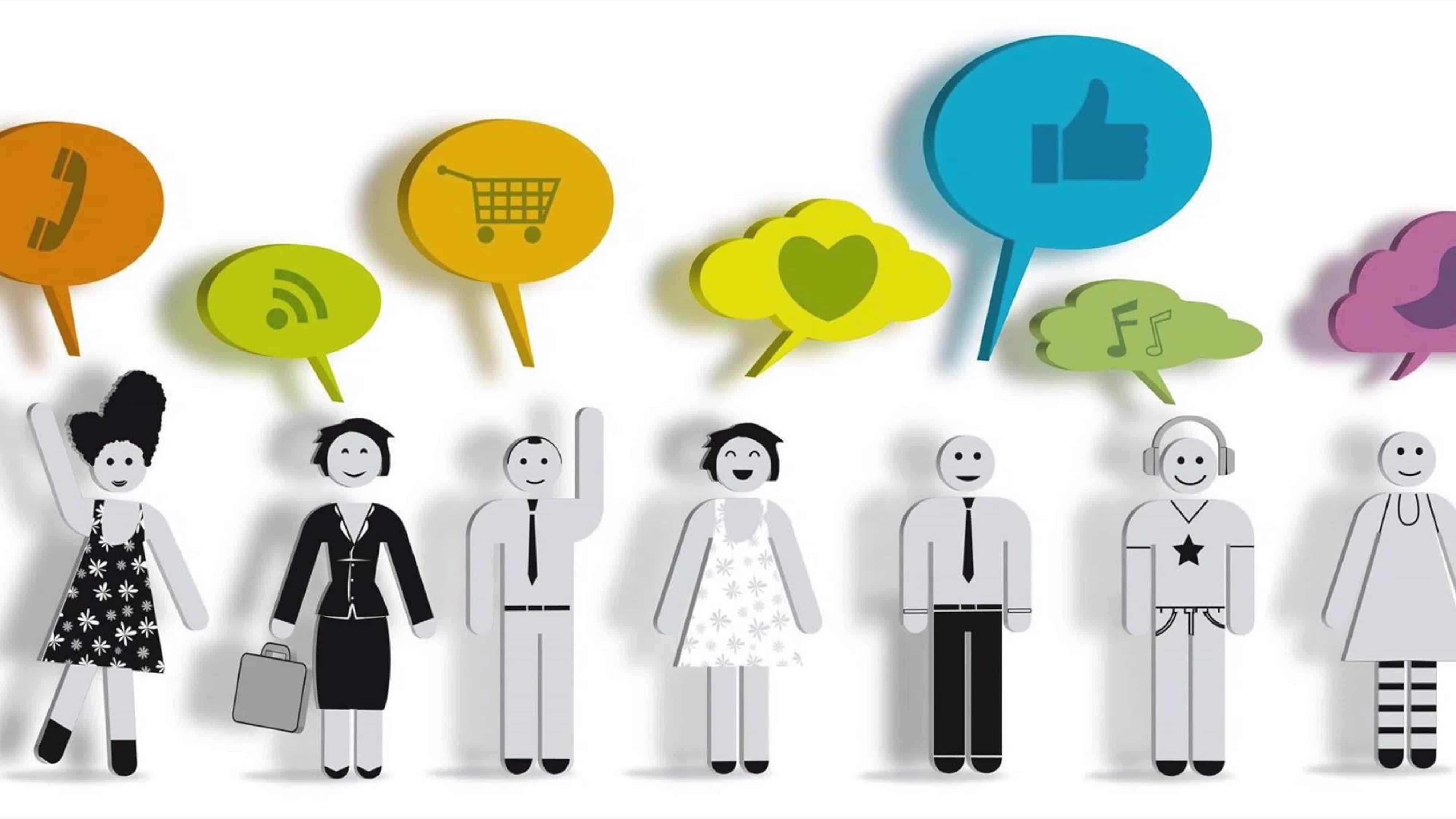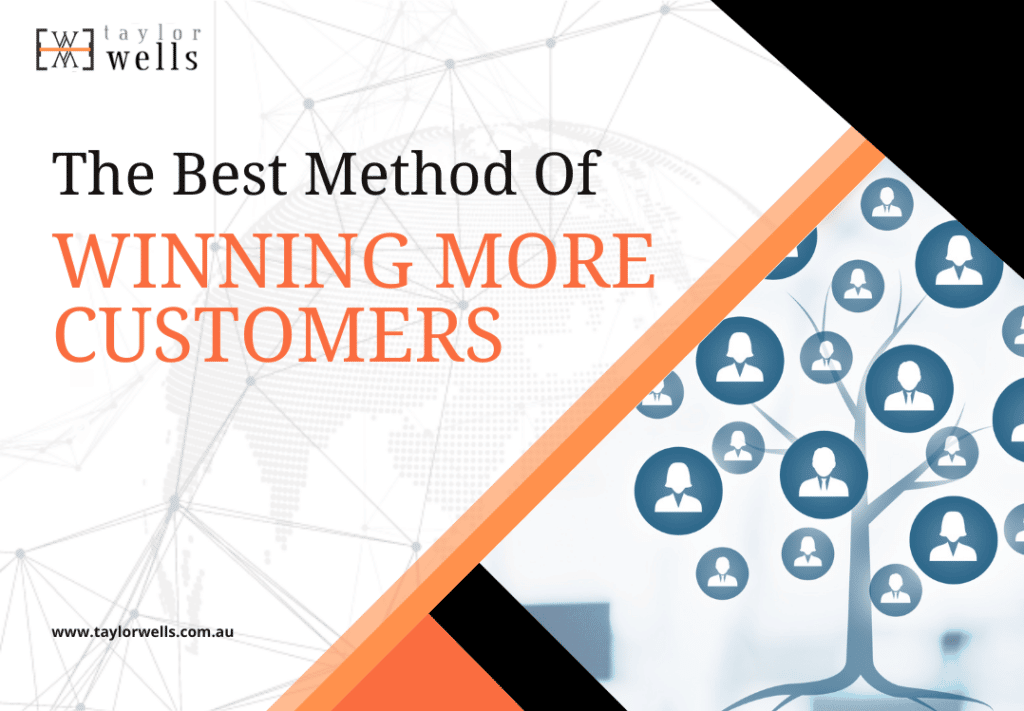
How Do Pandemics Impact Consumer Psychology and Pricing? ⏱️
Consumer psychology and pricing reveals the darker side of consumer sentiment and spending. Take the recent coronavirus pandemic, for example, when we saw consumer psychology and pricing changing overnight as mass media made us all feel guilty and ashamed for our bad hygiene. The overwhelming consumer response to this was to stock up on hand sanitiser and toilet roll (strange combo, I know..but this is what we all did – some way more than others).
>Download Now: Free PDF The Best Method of Winning More Customers
Next, we witnessed governments uniting across the globe to impose lockdown restrictions on our movements and civil liberties. We felt ashamed for being selfish; they told us they cannot trust us. They often accused us of being insensitive to the needs of others.
Response to lockdown in consumer psychology and pricing
The overwhelming consumer response to harsher lockdown restrictions was every man, woman and child for themselves. Consumers in their billions rushed into supermarkets around the world to buy as much shelf goods, flour, medical equipment, and dried goods as they could. Businesses either increased prices to make quick gains out of the crisis while others slashed their prices by 80% on single line item purchases to keep the cash coming through the door.
Fear took over our logical brains and panic set in across the board.
Then, we saw some countries go to the next level, and shoot people in the streets if they were seen walking around – even for food for their families. Both government and consumer response to coronavirus were either: DEFEND & PROTECT consumer sales of hatchets, screwdrivers, wine and food price hike soared, or DENY and dream of better times.
On the latter point, for example, cruise liners saw one of their biggest sales months in March and April – with cruise booking increasing 40% compared to 2019 and only 11$ cancellation. Then a poll today reveals that most people have not been coping well at all, drinking their way throughout the crisis without even a day’s break.
Table of Contents:
I. How Do Pandemics Impact Consumer Psychology and Pricing?
II. Pricing and the Psychology of Consumption

How Do Pandemics Impact Consumer Psychology and Pricing?
The lighter side of consumer psychology and pricing in a pandemic
But to say pandemics only show the dark side of consumer psychology and pricing would not be true either. While some people have been acting selfishly, many people have behaved in a civilised and orderly manner. They’ve actively gone out of their way to help each other; they have assisted vulnerable members of the community wherever possible; they waited in line for food selflessly – without panicking or grabbing everything for themselves.
Having stuck to the social distancing rules and locked themselves indoors for weeks on end, many people haven’t only helped their families and friends but strangers as well – and in extremely difficult conditions that go against all our survival instincts.
So, as we see examples of irrational consumer psychology and pricing during COVID-19, we have also seen many examples of people acting logically, calmly, and with dignity. They have not acted like small children that can’t think a day ahead as governments have said or erroneously predicted.
Now, how do these extreme psychologies co-exist during a pandemic? What can we all learn from consumer psychology and pricing during a pandemic?
In this article, we’re going to take a closer look at how pandemics psychologically impact shoppers, and what companies can learn from this. Including a pricing contingency plan that covers:
- Breakdowns in production
- Supply chain failure
- Unusual and large spikes in consumer demand
- Irrational psychology overriding logical buying patterns.
We argue that even amid the pandemic, companies can show they understand the plight of the public – and not to take advantage of the situation.
We believe that in the end, companies can plan to prevent panic buying by the public and keep the shelves replenished to meet demand, make money and ease shopper anxiety.
By the end of this article, you’ll learn how to price items to maintain a leading price position in the market without making your customers feel ripped off or taken advantage of when they feel down.
Contrary to popular belief in crisis on consumer psychology and pricing
Psychological research shows that people don’t generally act as irrationally or selfishly in crises as we are told repeatedly by the government or by the media. On the contrary, a recent study reveals how facing a common threat or danger can lead people to build a sense of shared identity or ‘togetherness’.
Consequently, leading to enhanced cooperation and support for other people. So, contrary to even our own beliefs and misconceptions, panic makes people overall much calmer than they usually are. People conform quickly and amicably to rules and regulations rather than putting their feet down and resisting in a hysterical and belligerent fashion.
However, these stoic human tendencies are fragile and susceptible to persuasive techniques or psychological interventions. Shared identity can happen to a greater or lesser extent. As shown by both real-life studies and virtual reality simulations, this is related to better or worse support and coordination in handling an emergency.
In contrast, shared identity including effective responses can be undermined by making divisions and influencing competition between people. A technique widely used by the British government in India and many governments since then.
Talk of ‘panic buying’
This is what’s happening nowadays with all the talk of “panic buying”. In a situation where people are told to prepare for a possibility of self-isolation for an extended period of time, stories of other people in the community being out of control and buying large amounts of food supply and other resources serve to create a feeling of “everyone for themselves and the devil takes the hindmost”.
Moreover, it’s completely logical for people to go out and buy these resources themselves. They are compounded further by empty shelves that show the cost if they delay purchase.
At the end of the day, if a person is convinced that his neighbours are excessively buying up, let’s say toilet paper, then it’s not ‘panic’ to go out there and also buy up rolls of toilet paper before they are all gone. It is an absolutely rational response to the information one has available. If anything, one would be foolish not to respond.
Notion of panic-buying
The underlying point to panic buying is that overusing the word and notion of ‘panic’ during a pandemic – and of panic-buying more specifically – is simply unreliable and also actively harmful.
Psychological studies show that news stories that overuse and employ the language of ‘panic’ actually create the very phenomena that they are condemning. They also create new divides to our already fractured concept of ‘togetherness’ by over-dramatising stories of selfishness and competitiveness.
From here, careful planning turns into dysfunctional stockpiling on the consumer side and price wars, commoditisation, and outrageous pricing decisions on the business side.
“Nothing in modern history” had led to as many shutdowns and self-isolation as COVID-19. The magnitude of the spread has to lead to a shift in consumers’ mindsets and our pricing needs to adjust to deal with this immense change.
The problem you’ll have though is that people naturally start to change their behaviour based on their instincts, to think ‘Do I want to go to the movies, do I want to go to a sporting event, or do I want to sit in big crowds?’
So it’s the psychology behind pricing here as the virus begins to spread that is most worrisome. People just begin to pull back on their willingness to be out there and spending, and of course, the consumer has and continues to be the economic bright spot for many countries. Without spending, we all go bust.
This causes businesses to rethink their pricing strategy and cut back on discounts, promos among other things. The law on supply and demand have taken precedent which in effect increased the prices.
COVID-19 – an unwitting stress test
The coronavirus outbreak is not only a time of confusion and uncertainty but also a period in which many are experiencing social isolation. Both of these factors can trigger people to elastic consumer response, which means they buy things they don’t need.
Businesses need to be doubly aware of changing elasticities as nothing remains constant in a crisis. New SKUs are quickly showing inelastic demand. Older, once popular SKUs are not as profitable as they were. Times change; price optimisation is inevitable to keep up.
Unable to cope with uncertainty associates with more extreme hoarding behaviour. An individual’s perceived inability to cope with distress is one of the strongest predictors of hoarding behaviour. If it’s in a person’s general nature to avoid distress, they may be at risk of buying more products than they can feasibly use during the pandemic. This is big news for businesses as risk aversion is universal, not case by case. Whole segments are changing their behaviour at once. So you’re pricing has to change too…
For such people, it may be difficult to believe authorities when they announce supermarkets will not close. Or, if they do believe them, they may decide it’s best to “prep”, just in case things change.
Companies shouldn’t place more burden on already distressed shoppers. They must instead offer some guidelines limiting their purchases on essential items and not overprice their products. Yes, adjust prices quickly – but retain a clear sense of your price positioning strategy in the market. A case in point is Woolworths who recently announced its strict guidelines on food limits – but they have been less than clear about their pricing positioning strategy.
Discussion
You can see supply lines disrupted at the source. Workers are afraid of infection. As a result, breakdowns in production are inevitable and supply and prices are erratic/unpredictable.
But production will double once the crisis passes and prices will stabilise – this is what happened in China as the coronavirus curve flattened out – and as Farre’s law predicted it would over a hundred years ago.
The question now though is will the prices go back to ‘normal’ or will there be a new ‘norm? Woolworths supermarket announced today that its new consumer catalogue will be showcasing 50 per cent off its biggest named brands across most dry food and snack categories – this has never happened before, accelerating, in turn, their very aggressive EDLP and private label strategy.
Consumer demand can’t avoid large spikes
When faced with uncertainty, people will find ways to survive the crisis. The same with irrational behaviours of buyers: Their instinct is to buy anything will be greater just to get through this. Companies can only hope that logic and calmness will override the urge to overspend or underspend.
Even if the pandemic dies down, retailers will need to be ready for the next crisis; expect changes to happen. As numbers of coronavirus cases continue to grow in many countries, we are witnessing a dramatic psychological change in consumer behaviour that is ultimately changing how people buy and how businesses price their goods.
As consumers unite over common feelings of fear, helplessness and anxiety, consumer psychology tells us all to hoard stuff to survive uncertain times. A close analysis of the instinct of self-preservation in what people do in disasters paints a picture that is very different from the conventional image. Indeed, there are times when people died not because of an excess of selfishness but delayed by looking after others.
Implications
Consumer confidence has risen less than expected this year, as a result of the coronavirus (although economists tell us that the coronavirus would unlikely dent consumer sentiment).
Social media, fake news, and lockdowns are negatively impacting consumer sentiment across the globe. When consumer sentiment is low for a sustained time, panic spreads fast. More consumers switch to survival mode. They hoard every item on the shelves and overspend on irregular items. Alternatively, they begin to hold back on spending across the board. All scenarios are terrible for the economy.
Mixed messages to people in consumer psychology and pricing
Consumers are currently rethinking their options and altering their plans. News of shortages on essential items and an uncertain future creates anxiety among us. News outlets must counter fake news by providing the public with factual information and assurances.
Consumers will return to stores, malls, and social gathering places after the crisis passes. Government officials will start to appear less on the news as people take control of their lives and spending again. However, this crisis will encourage retailers to look for more ways to deliver virtual experiences.
Consumers are now in the habit of going online to shop. Businesses in response must get in the habit of interacting with customers online rather than through a distributor, supermarket.
Days of drawing crowds to stores are numbered: E-commerce sales, in general, are expected to surge, as shoppers stay home during the crisis, but grocery sales are where the biggest psychology behind pricing could occur.
〉〉〉 Get Your FREE Pricing Audit 〉〉〉
Conclusion
The global response to COVID-19 should be a strong warning for many to be better prepared should something similar happen [in the future]. Retailers should be making contingency plans if and when similar situations occur.
Yes, making money in a crisis is fine – this is how the free market operates. But destroying your brands with excessive discounts and specials one day. Then blowing the ceiling off your prices the next day is not the best approach to making money.
For consumers – When shopping, make a list and stick to it when you are in the shop. This way, you won’t be susceptible to anxiety-driven purchases triggered; by the sight of empty shelves, or thoughts of supermarkets closing.
For businesses – one, diversify production and sort out your stock inventory management. By knowing which items will be in more demand during a pandemic; you’ll be able to manage and control the flow of stock. Two, be ahead of the curve managing suppliers. Be ready to replenish stock and shelves rather than on the back foot. Don’t leave gaping holes in supermarkets that consumers are not used to seeing and/or associate with ‘end of world’ scenarios.
Above all, our message is not to panic! It’s okay to feel anxious, but just don’t panic.
When your pricing strategy is not working out because of the crisis. Contact us and we’ll assess how you can improve your company’s strategy. Don’t miss out on this opportunity.

Pricing and the Psychology of Consumption
How do pricing and the psychology of consumption work on customers? What drives consumers to choose between and buy certain products? Are all our decisions based on value judgements or simply the price? How do psychology and persuasive price and marketing communication influence consumers to buy or switch brands?
In this article, we will explore the emerging discipline of consumer psychology, and its impact on pricing and consumer behaviour. We’ll discuss what drives a person to buy. Their needs and wants. And what pricing and psychological interventions are required to persuade people to buy from you at different price points. By the end of this article, you will learn how consumers think and respond to your pricing – and what you should avoid the next time you issue a price rise.
What is the psychological pricing strategy in pricing and the psychology of consumption?
All these questions (above) can be answered using the teaching and insights derived from a growing discipline called consumer psychology – a discipline that seeks to understand and identify the underlying cognitive processes that drive consumers’ to make specific choices and decisions.
Consumer psychology also includes the study of; how consumers respond to the influence of price, discounts, promotions, product placement, marketing, and advertising. This means consumer psychology is very important to pricing and the psychology of consumption.
As with pricing, consumer psychology considers both internal and external stimuli that influence purchase decisions. Key considerations include; motivations to buy (internal) as well as cues to buy (external) – i.e., things like; price, store layout, product positioning in the store or any factor that directs people to purchase certain items.
What are the motivations to buy that product?
Psychologists look at a range of human motivations to underpricing and the psychology of consumption. For instance, key motivations include:
- What’s in it for me?
- What will I get from using your product?
- What product will give me the most for the money and time that I’m putting in?
These motivations tell psychologists a lot about how people consume everyday products. The major finding being that our decisions to buy one product over another are mostly irrational rather than logical decisions.
In other words, we buy stuff because we want to avoid feeling bad. We desire something so much to feel good that we don’t care how much it costs. For example – diamond pricing, luxury fashion, house prices.
According to Harvard professor Gerald Zaltman, 95% of all our purchasing decisions are subconscious. In fact, most consumers Zaltman argues don’t compare multiple competing brands and price points like many consumer reports say they do. Rather, they are driven by unconscious urges, the biggest of which is emotion.

Psychological pricing strategy examples
Two good examples of pricing and the psychology of consumption are the concepts of framing and anchoring.
What is the framing effect in pricing? The framing effect is the difference in consumer willingness to pay based on whether the price point is framed as a gain (“you could have…”) or a loss (“don’t miss out…”).
The framing effect used by psychologists and pricing teams to understand; the value consumers place on different price points based on its intrinsic value to them.
A key finding from the framing effect is that consumers are motivated to buy items based on ‘buy more for less’ promotions. But interestingly they are twice as motivated to avoid buying something at full price. Especially when they could have got the same item for less or at a discounted price.
Anchoring effect in pricing
What is the anchoring effect in pricing? The anchoring effect conversely is the difference in consumer willingness to pay derived from actual comparisons with other like products and price points.
The anchoring effect here is based on comparative values and choice models rather than motivations.
Both concepts of framing and anchoring are somewhat used in setting customer price points; (depending on a pricing team’s skills and approach). However, they are not strictly pricing concepts. Rather they are psychological concepts derived from the study of consumer and cognitive psychology.
A good starting point to understand more about the topic of pricing is the book Priceless by William Poundstone.
In Priceless, we are shown how retailers use the framing and anchoring strategy to make a price point more attractive and less attractive to customers. We are also shown how consumers are subconsciously influenced by even arbitrary numbers on a page.
The main argument in Priceless is that consumers don’t really know what anything should cost. And need external pricing cues to guide them.
Poundstone also argues that a price point is like an “anchor” in the consumer’s mind. Serving as a “mental benchmark or starting point for estimating an unknown quantity”. A good example of this is a luxury Prada watch whereby one Prada watch is intentionally priced higher – at a seven-digit figure – to make the four-figure watch next to it look like a terrific deal.
The use of psychological price points in the psychology of consumption
Another good example of pricing and the psychology of consumption is the pricing technique of strategic price repositioning. Using a well-known consumer psychology technique called psychological pricing – pricing teams can create a new perception of value for a price consumer.
The latest research, for example, shows that the price point of $1.99 instead of $2.00 drives more volume for business as customers perceive the $1.99 price point as fairer than $2.00.
An investigation of why psychological pricing drive profitability is as follows:
1. According to psychological pricing, $2.00 is a psychological threshold – a threshold that a significant proportion of customers do not want to pay.
2. If the business decides to charge customers $2.00 instead of $1.99 the last two digits of the price would negatively impact sales volume because it exceeds the psychological threshold.
3. Reducing the price point by 1 cent and changing the last two digits to .99c boosts sales volume – i.e., the price point is below the psychological threshold and customers feel like they are getting more value for their money even though they’re not really.
4. Unit sales volume increases but so too has the profitability of each unit sold.
5. The business has established a price point that both increases sales and margin without sacrificing anything – or just 1 cent.
6. The customer and business both get what they want as a result of influencing consumer price perception.
Persuasion example in Pricing and the psychology of consumption
The final example of pricing and the psychology of consumption that we’d like to cite in this article is based on the book Persuasion by Robert Cialdini. In this book, Cialdini explores an important motivator in consumer psychology called “pre-suasion.”
The book “Pre-suasion” seeks to add information to existing behavioural science information by demonstrating how susceptible we all are to psychological ‘framing and anchoring‘ interventions.
Pre-suasion shows that consumers are susceptible to a number of latent pre-suasion techniques used by businesses every day. It then identifies what savvy businesses and communicators do before delivering a message to get their messages (overt and subliminal) accepted by consumers.
The book Pre-suasion: A Revolutionary Way to Influence and Persuade, by Robert Cialdini, gives us vivid examples of how pricing and the psychology of consumption play out in real life.
For example:
Caldini shows us how an FMCG business used Pre-suasion to market their new soft drinks in a mall of shoppers. The soft drinks manufacturer wanted to persuade shoppers that they were more adventurous people when they tried their new products. To do this, the soft drinks manufacturer asked shoppers a quick question before they asked them to try their new drink: Are you brave enough to try this new drink?
They found that when people were asked this question, the first 97% said they were adventurous people and very willing to try the drink.
This simple experiment showed that when the business framed the tasting like a ‘challenge’ to passersby in the mall, most people were quite happy to try the new drink. They found that making the tasting a trial made people more compliant with their suggestions.
Other Factors Influencing Consumer Buying Behaviour in the Pricing and the psychology of consumption
Below are 3 other external factors to consider when you’re thinking about how consumers think and respond to prices, including:
- Cultural factor − Factors like culture, subculture, and social class. For a brand, it is essential to take into account the cultural factors inherent to each market or to each situation in order to adapt its product and its marketing strategy. Things like family and friends can have a big impact on what consumers buy.
- Social factor − Factors like reference group, secondary reference group, and family. This explains the outside influences of others on our purchase decisions either directly or indirectly. Social factors include peer pressure, blending in with society and club membership. These can have a significant effect on consumer behaviour.
- Personal factor − Factors like age, sex, lifestyle, occupation, and financial status. These may explain why our preferences often change as our `situation’ changes. You no longer buy the things you buy when you were young or when your status in life enables you to buy things you always wanted. A consumer’s lifestyle, values, environment, activities, hobbies, and consumer habits evolve throughout his life. Being a teenager, employment, having a family, and growing old influence what we buy and when during particular phases in our lives.
Discussion
In a very real sense, then, pricing and the psychology of consumption are influenced by a range of external factors and a hierarchy of internal choices, needs, and motivations too. However, there are times in life, when our internal hierarchy of needs can and do override all of the external factors listed above with the most notable example being: during times of crisis.
For example, during times of crisis like the COVID-19 pandemic – we saw how billions of consumers bought huge quantities of ‘essential’ items to meet their immediate and physical needs and also calm their need for safety.
Toilet paper, tinned and frozen food, shelf food, flour, medical consumables (face masks and bandages) fly off supermarket shelves until nothing was left and massive supply shortages followed. We even saw people attack other customers in local supermarkets to get the last toilet roll off the shelf.
Hierarchy of needs
To explain how our innate human classification of needs impact both consumer and business pricing decisions, we’ll turn to Maslow’s hierarchy of needs. Abraham Maslow provides the first and best classification of human needs available.
In short, Abraham Maslow postulates that we are all motivated by five basic categories of needs: physiological, safety, love, esteem, and self-actualisation…each of which are briefly summarised below:
- Physiological needs are the topmost in the hierarchy. If someone is lacking in this area, they’re likely to try to meet these physiological needs first.
- The next need would be safety. Maslow’s theory states that people are more likely to react with fear or anxiety when they feel insecure or their safety is at risk. Our safety needs manifest early in childhood. Children and the elderly have a greater need for safe and predictable environments.
- Then comes feelings of love and acceptance. This need includes both romantic relationships as well as ties to friends and belonging in a family as well as in a social group.
- Then comes the need for greater self-worth. When people’s esteem needs to be met; they feel confident and see their contributions and achievements as valuable and important to the whole organisation.
- The last need is self-actualisation – refers to feeling fulfilled or feeling that we are living up to our potential.
Hierarchy of needs theory enacted in the pricing and the psychology of consumption
As we all know from life during the COVID-19 pandemic, Maslow’s hierarchy of needs theory has been enacted by global populations of consumers repeatedly. With billions of consumers globally all making the same decisions to hoard vast amounts of ‘essential’ items based on their physical and safety needs.
But it was not only consumers who influenced by their hierarchy of needs. No, in fact, many businesses made price rise decisions based on our need for physical safety during a time of need and uncertainty.
Understanding how people prioritise their needs is a major influence on how businesses set customer prices. As Maslow’s theory shows people and businesses both make choices using an internal needs-based classification of everyday items – i.e, ‘essential’ to our physical needs and non-essential items that are nice to have.
In times of crisis, we have seen a complete shift in priorities and pricing strategy. We have witnessed a re-classification of value taking place literally overnight; whereby cheaper but essential items have increased in value and price by up to 800% and non-essential fashion retail have decreased in value and price by over 80%.
Implication
- More businesses are using psychologists to unravel the psychology of consumption.
- Psychology and emotion play an enormous part in the purchase of any product.
- Most consumers aren’t as savvy as they might like to believe.
- Pricing a product based on its attributes produces lacklustre financial results. Completely overlooks the subconscious, human element in the decision-making process.
〉〉〉 Get Your FREE Pricing Audit 〉〉〉
Conclusion
Pricing is more than numbers. Understanding the internal hierarchy of needs influencing the decision-making process is an important step to improving your price strategy architecture.
In effect, your price architecture is a mirror of our human needs. And a play on our often misguided perception of value. Businesses that ignore these fundamental findings and principles will continue to lose margin issuing uninformed pricing decisions.
It is important therefore to remember that consumer price perception plays an influential role; in any price strategy architecture development work you do.
Click To Download Your Free Executive Guide To Best-In-Class Pricing Strategy Now.
For a comprehensive view on maximising growth in your company,
Download a complimentary whitepaper on How To Drive Pricing Strategy To Maximise EBIT Growth.
Are you a business in need of help to align your pricing strategy, people and operations to deliver an immediate impact on profit?
If so, please call (+61) 2 9000 1115.
You can also email us at team@taylorwells.com.au if you have any further questions.
Make your pricing world-class!
Related Posts
Leave a Reply Cancel reply
Categories
- marketing strategy (26)
- Organisational Design (14)
- Podcast (114)
- Pricing Capability (87)
- Pricing Career Advice (10)
- Pricing Recruitment (19)
- Pricing Strategy (289)
- Pricing Team Skills (13)
- Pricing Teams & Culture (24)
- Pricing Transformation (47)
- Revenue Model (25)
- Sales Effectiveness (27)
- Talent Management (7)
- Technical Pricing Skills (35)






